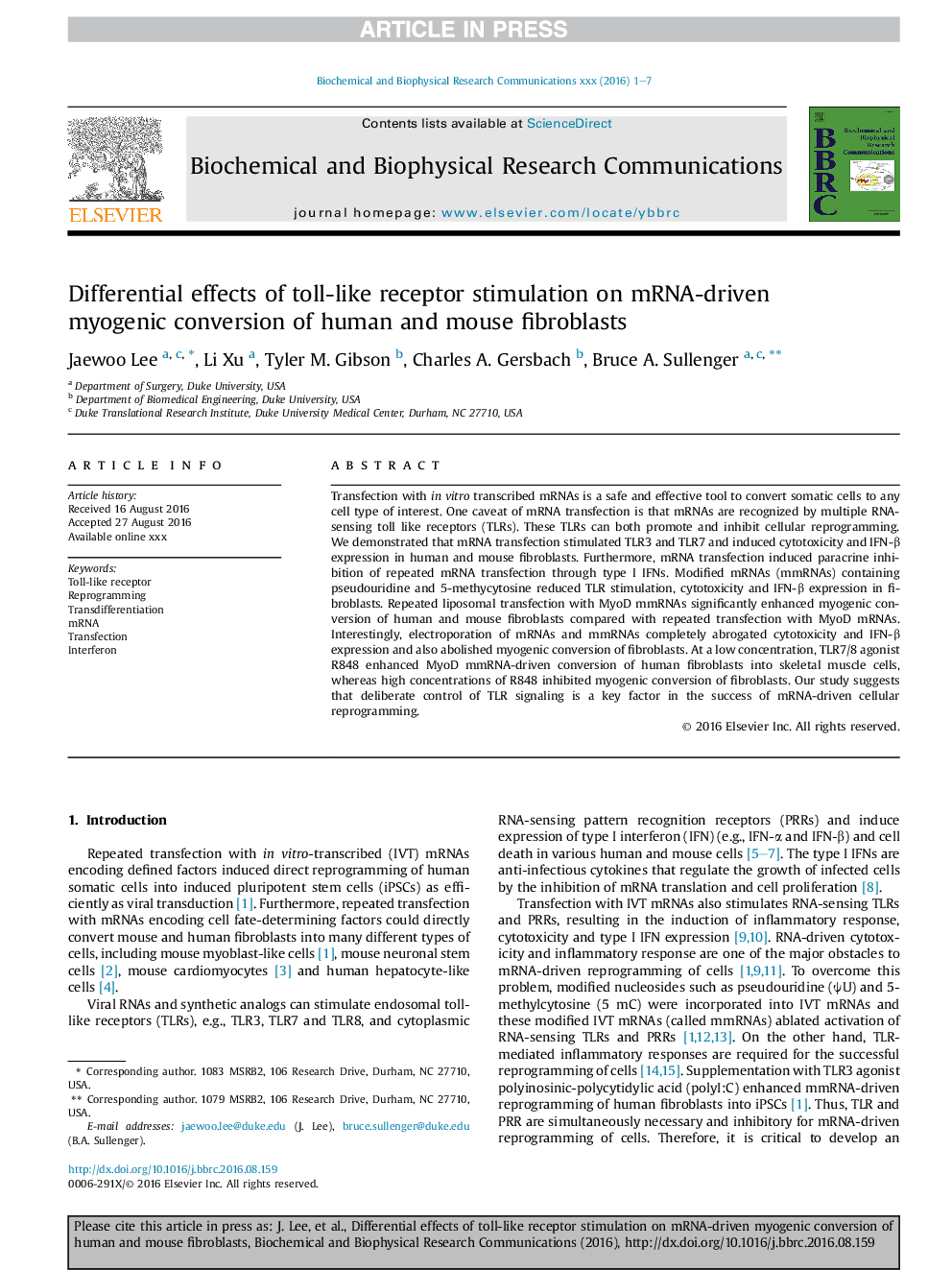| Article ID | Journal | Published Year | Pages | File Type |
|---|---|---|---|---|
| 5506763 | Biochemical and Biophysical Research Communications | 2016 | 7 Pages |
Abstract
Transfection with in vitro transcribed mRNAs is a safe and effective tool to convert somatic cells to any cell type of interest. One caveat of mRNA transfection is that mRNAs are recognized by multiple RNA-sensing toll like receptors (TLRs). These TLRs can both promote and inhibit cellular reprogramming. We demonstrated that mRNA transfection stimulated TLR3 and TLR7 and induced cytotoxicity and IFN-β expression in human and mouse fibroblasts. Furthermore, mRNA transfection induced paracrine inhibition of repeated mRNA transfection through type I IFNs. Modified mRNAs (mmRNAs) containing pseudouridine and 5-methycytosine reduced TLR stimulation, cytotoxicity and IFN-β expression in fibroblasts. Repeated liposomal transfection with MyoD mmRNAs significantly enhanced myogenic conversion of human and mouse fibroblasts compared with repeated transfection with MyoD mRNAs. Interestingly, electroporation of mRNAs and mmRNAs completely abrogated cytotoxicity and IFN-β expression and also abolished myogenic conversion of fibroblasts. At a low concentration, TLR7/8 agonist R848 enhanced MyoD mmRNA-driven conversion of human fibroblasts into skeletal muscle cells, whereas high concentrations of R848 inhibited myogenic conversion of fibroblasts. Our study suggests that deliberate control of TLR signaling is a key factor in the success of mRNA-driven cellular reprogramming.
Related Topics
Life Sciences
Biochemistry, Genetics and Molecular Biology
Biochemistry
Authors
Jaewoo Lee, Li Xu, Tyler M. Gibson, Charles A. Gersbach, Bruce A. Sullenger,
